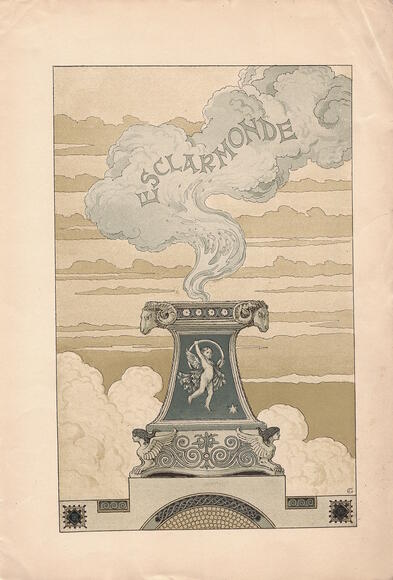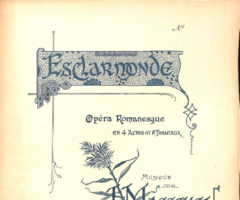Esclarmonde

Opéra romanesque in 4 acts, 1 prologue and 1 epilogue, premiered at the Opéra-Comique (Paris) on 14 May 1889.
Shortly after the fire at the Opéra-Comique on 25 May 1887, Massenet met the Californian soprano, Sibyl Sanderson, at a dinner party. When she suggested singing the aria of the Queen of the Night, the composer was astonished by her magnificent voice. The next day, when his publisher gave him the libretto of Pertinax, Massenet agreed to set it to music, thrilled that he had already found the ideal singer. The libretto, which became Esclarmonde, was written by Alfred Blau and Louis de Gramont after two medieval sources: Partenopeus de Blois and Huon de Bordeaux. The sorceress Esclarmonde, queen of Byzantium, secretly yearns to be with Roland de Blois, who agrees never to attempt to see her face or find out her name so that they can be together. Their union is ill-fated and the lovers are forced to part. However, by triumphing in the tournament held to find a lawful husband for Esclarmonde, Roland finally wins her hand in marriage. Begun during the summer of 1887 and completed in the autumn of 1888, the score is Wagnerian in influence, although it follows in the tradition of French grand opera in its structure and storyline. There are numerous, frequently recurring motifs, while the score is punctuated by passionate duets. The triple-woodwind orchestra marked an important stage in the composer’s career. Intended for the Universal Exposition, Esclarmonde was premiered on 14 May 1889 at the Opéra-Comique. Audiences were struck by the work’s musical virtuosity, the magic lantern slides designed by Eugène Grasset and the wonderful voice of Sibyl Sanderson who, in the 4th act, reached a high G nicknamed the “Eiffel Note of the Opéra-Comique”.




